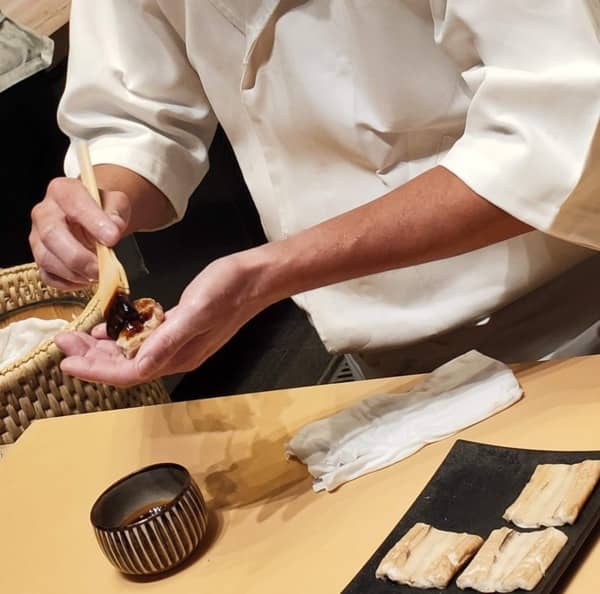During the travel restrictions of the pandemic, being able to taste the authentic craftsmanship of Japan’s Jiro Ono in Taipei truly fulfilled my dream! Bringing the skilled hands of the sushi master from Tokyo’s Minami-Aoyama to Taipei, Sushi MASUDA made it!
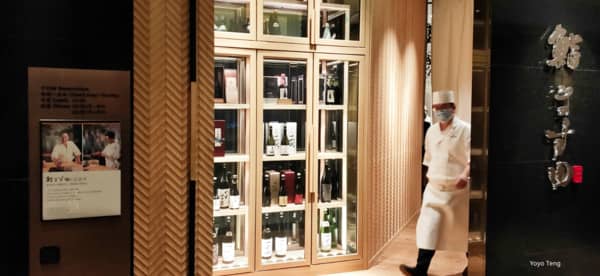
Tokyo’s renowned Michelin two-star restaurant, Sushi MASUDA, has relocated to Taipei and settled on the fifth floor of the Mandarin Oriental as “Sushi MASUDA Taipei,” transforming into a high-end Japanese restaurant specializing in sushi.

Bringing the sushi master’s direct disciples from Minami-Aoyama involved considerable effort and resources. Overcoming a 14-day quarantine and ensuring ingredient freshness were just some of the challenges they faced. Behind Chef Masuda lies an inspiring story of determination.

Chef Masuda, with over 23 years of sushi experience, started as an apprentice at “Tenzushi” in his hometown at 17. He then worked at “Mansou” for four years, honing his skills. His dream has always been to become a top sushi artisan.
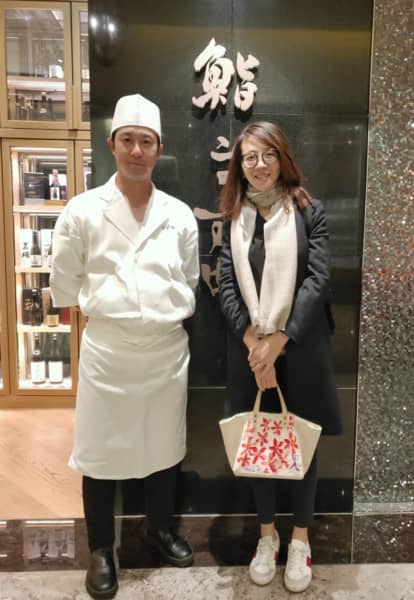
In 2014, Chef Masuda opened “Sushi MASUDA” in Tokyo’s Minami-Aoyama, earning a Michelin star the next year and another in 2017. Known for its limited seats and authentic sushi, it’s a privilege to experience Chef Masuda’s expertise, derived from Jiro Ono’s tradition, now available in Taipei.
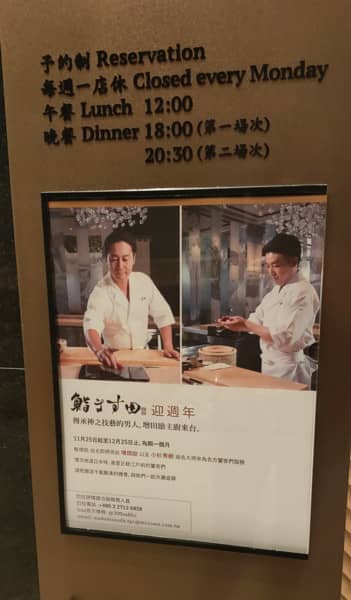
It’s as rare and valuable as winning a big prize to have the sushi master’s proud disciple, Chef Masuda Rei (left), and Taipei head chef, Kusugi Hideki (right), team up for a culinary collaboration.
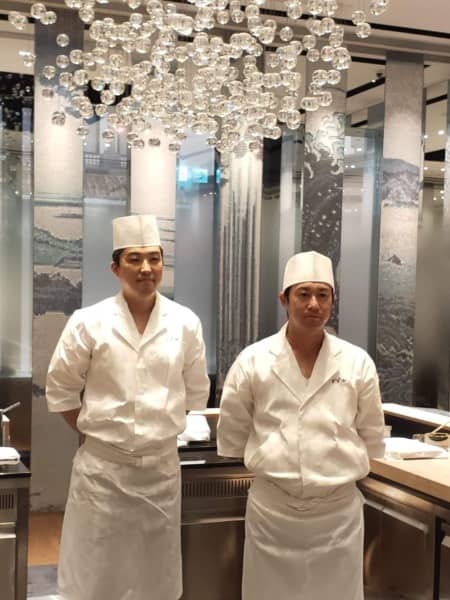
Chef Kusugi (left) aims to replicate the pinnacle of perfection from Tokyo’s “Sushi MASUDA” in Taipei during his tenure as head chef, drawing upon over 23 years of rich experience in ingredient selection, preservation, preparation, rice texture, optimal timing for fish and shellfish consumption, and the precise grip for forming rice sushi.
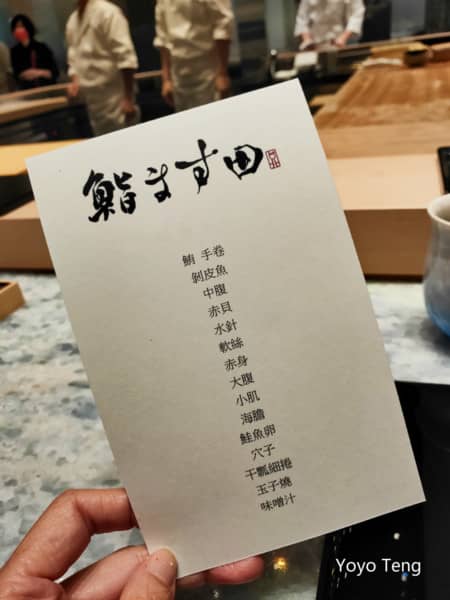
Here comes the menu

“Sushi MASUDA Taipei” officially opened its doors on December 3rd last year and has already made waves by receiving a Michelin Plate recommendation in this year’s Michelin Guide for Taipei and Taichung.
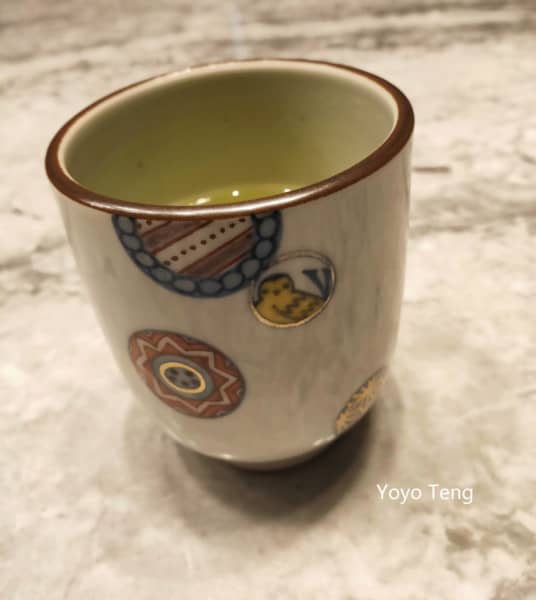
Savoring the ultimate Japanese cuisine feast, the tableware is also an essential art. Before dining, a cup of welcome tea is served in the waiting area, allowing guests to admire the beauty of Edomae sushi craftsmanship through the teacup!
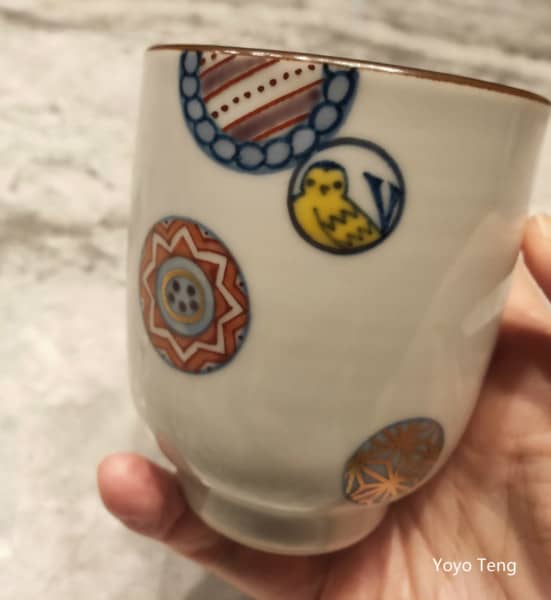
At “Sushi MASUDA Taipei,” which emphasizes the “full sensory experience,” the tableware is also carefully selected from the hands of top Japanese craftsmen. For example, this green tea cup is crafted from the highest-quality Arita porcelain from Kyushu.
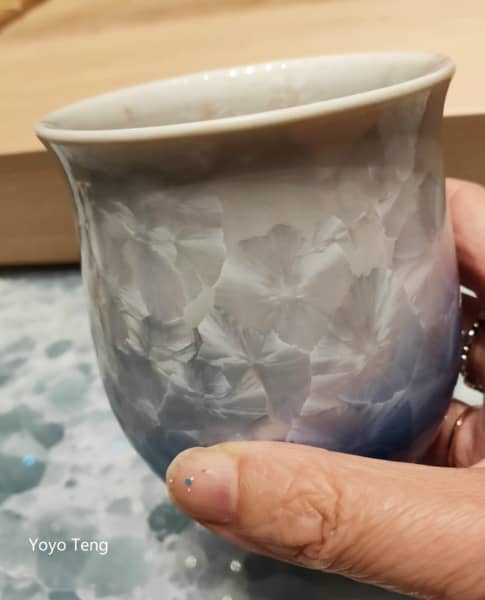
The dining cups are from Japan’s traditional Kutani-yaki. Originating in the 17th century in Kanazawa, Ishikawa Prefecture, it’s known for its vibrant layered colors resembling dawn hues. Its unique composition sets it apart from other Japanese ceramics, making it popular among collectors worldwide.
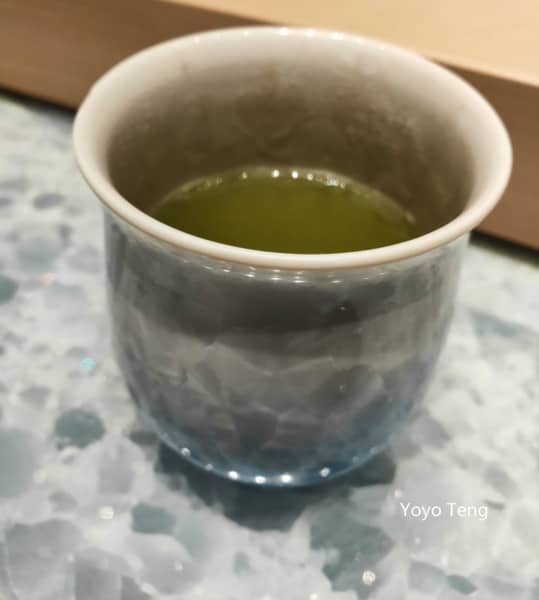
Kutani-yaki uses three main techniques: Ao-de (blue hand), Gosai-de (five-color hand), and Aka-e (red hand). Ao-de involves a blue base with yellow and green accents, fully covering the vessel. It’s then intricately detailed with blue pigment and gold leaf, creating a delicate and splendid finish!

The space is designed by the renowned Japanese team led by Yukio Hashimoto. The restaurant’s counter area has only 12 seats, and the eye-catching crystal lights use Egyptian crystals. The arrangement of the crystals creates an atmosphere reminiscent of bubbles rising from the bottom of the sea.

To match the authentic Edo-style sushi, all the utensils here are inspired by artwork from the Edo period. This is a chopstick holder.
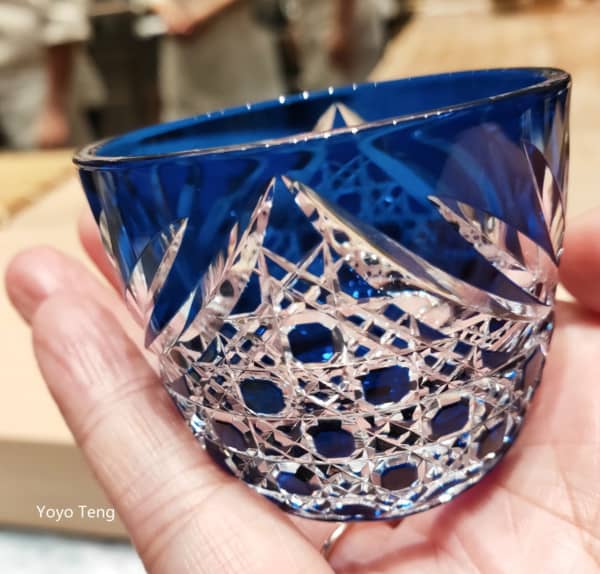
Edo Kiriko:
In 1834, glass craftsmen in the Edo period started carving designs on glass surfaces. They later introduced glass cutting techniques from England, establishing the Edo Kiriko craft that continues to this day. It’s a beautifully designed everyday glassware made specifically for common people.
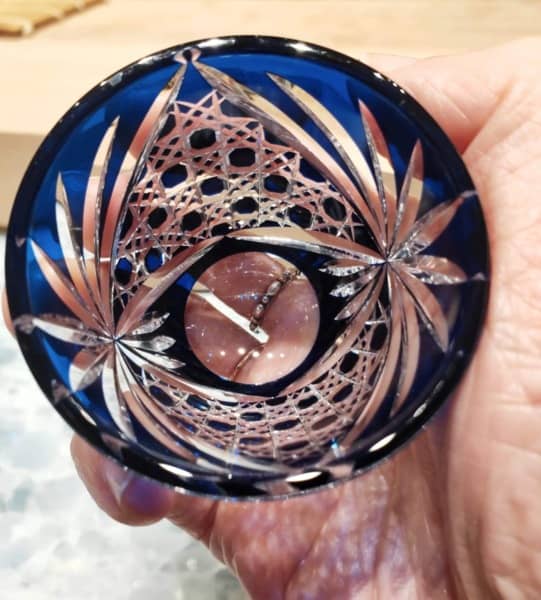
Craftsmen skillfully carve intricate patterns onto glass using various techniques, including carving delicate designs on the surface of double-layered glass. They then use a diamond wheel to carve and polish the glass with a rotating grindstone, achieving a smooth and glossy finish.

They create a pattern of connected chrysanthemums using delicate lines. Chrysanthemums represent long life, making this pattern very auspicious.
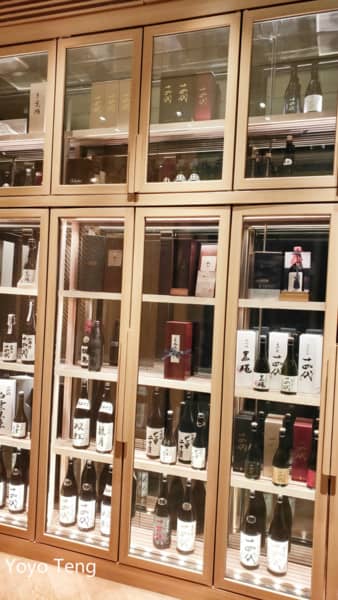
At any temperature, each sake has its unique flavor. Premium sake, when chilled, brings out a rich fruity aroma with a slightly sweet and refreshing taste. It pairs well with sashimi, white fish, tempura, and seafood. All the sake in the restaurant is of excellent quality.

黑龍酒造 龍 限定 大吟釀/容量: 720ml
The powerful Black Dragon sake comes from the pure waters of the Kuzuryu River, protected by the Kuro Ryu Shrine. It’s known as “Black Dragon Daiginjo” and is favored by Crown Prince Naruhito. The rice used is the famous Yamada Nishiki from Hyogo Prefecture’s Toyosato-cho.
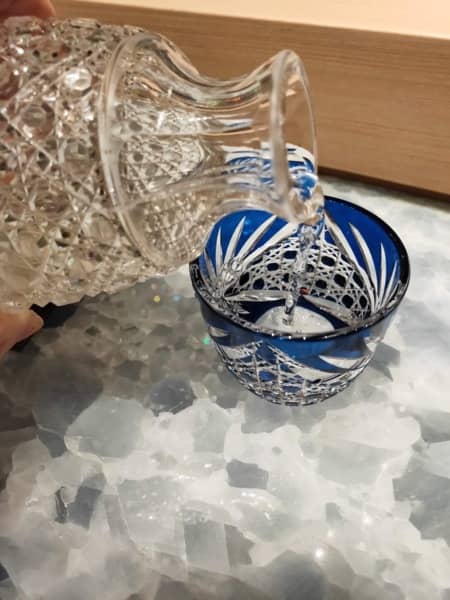
Made with water from the Kuzuryu River and yeast cultivated by the brewery, this sake boasts delicate aromas akin to glass. Each person experiences it differently, with fruity notes ranging from apple to banana, peach, and melon. Its silky texture is as smooth as silk.
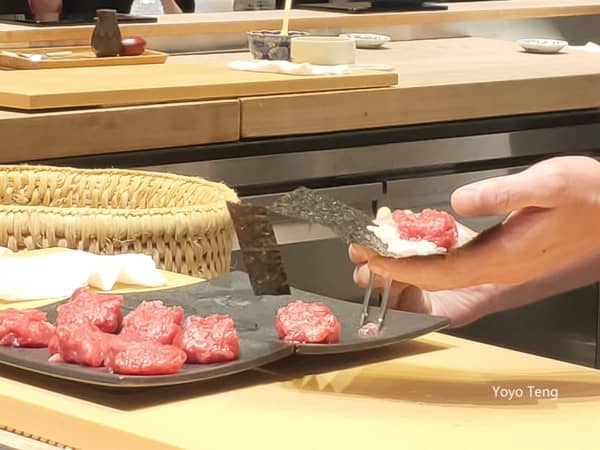
At “Sushi MASUDA,” the sushi rice must be cooked to perfection, timing it precisely according to the guest’s dining experience. The ratio of vinegar to rice is meticulously controlled by the chef. The sushi rice, playing a crucial role, is meticulously selected and blended by the chef, full of intricate details and secrets.
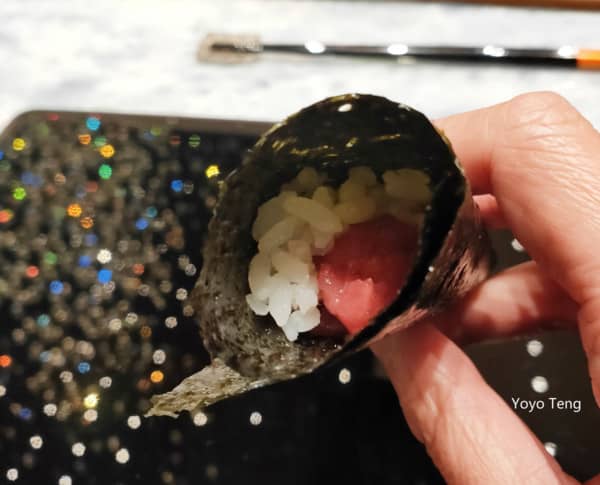
鮪 手卷
Every day, 2 to 3 types of Japanese rice and 2 types of vinegar are meticulously selected based on the season, weather changes, and rice quality. The proportions of rice varieties and vinegar are adjusted accordingly. During the preparation process, careful consideration is given to the water amount and the fluffiness of the rice after cooking.
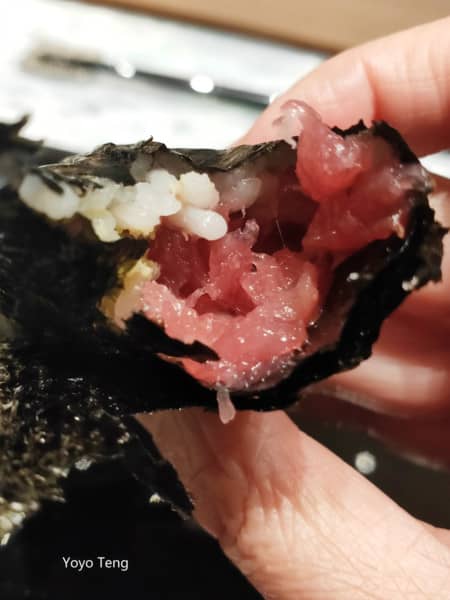
The key to combining ingredients and rice lies in the master’s “hand technique.” Crafting sushi is like a graceful dance in the master’s hands, with each delicate movement ensuring the rice is neither too loose nor too tight. It maintains an airy texture between grains while securely binding the fish and rice together.
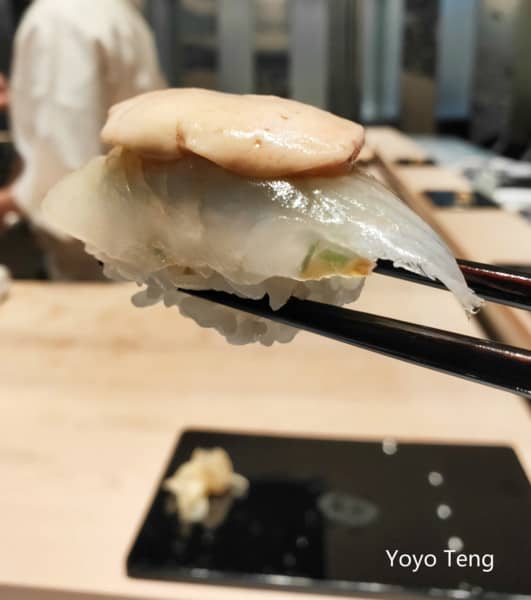
剝皮魚
Every dish served at “Sushi MASUDA Taipei” is carefully crafted with meticulous attention to ingredients and cooking details. The chef selects fresh seasonal fish from Kyushu and uses their rich, fatty fish liver to make nigiri sushi, providing a smooth and indulgent texture full of flavorful oils.

中腹
The chef specially select top-grade tuna from Oma, Aomori. Tuna exhibits different flavors depending on the season and the cut used.

To faithfully recreate the Michelin-starred flavors of Tokyo’s “Sushi MASUDA” in Taipei, all the Japanese ingredients in the restaurant are personally handpicked by Chef Masuda himself every day at the market in Japan and then air-flown to Taiwan!
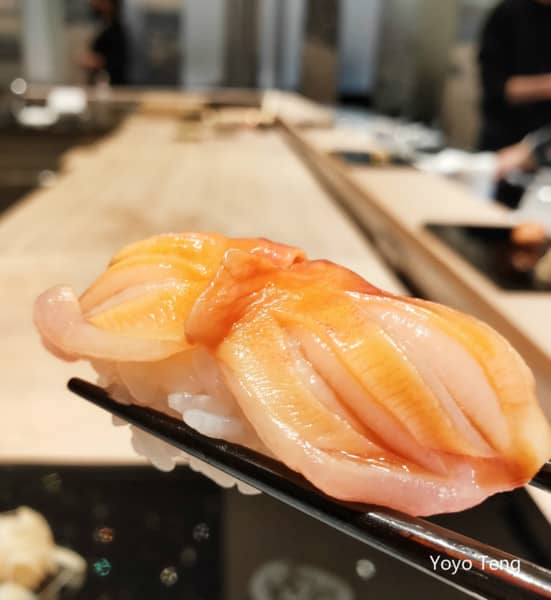
赤貝
All the fresh ingredients undergo meticulous handling by the chefs to present dishes of the highest standard to every sushi-loving customer.

水針
In Japan, Kohada is considered a representative sushi ingredient for Edomae sushi. Kohada sushi also serves as a litmus test for measuring the skill level of sushi chefs. At “Sushi MASUDA Taipei,” the Kohada comes from the Kumanoto Amakusa region in Kyushu.
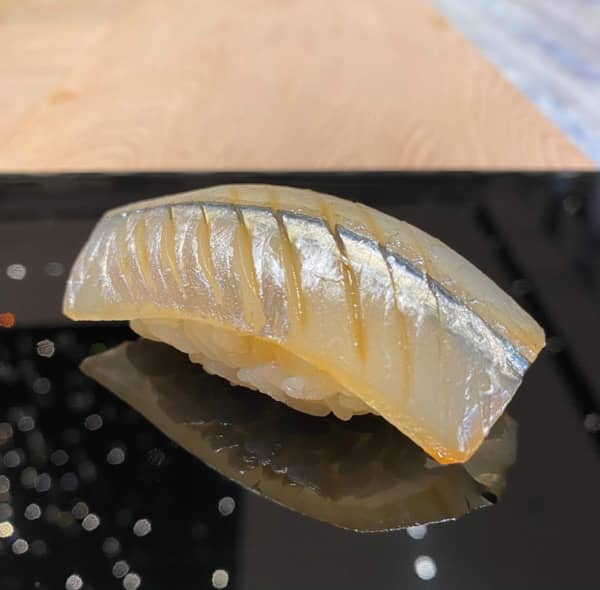
Before anything else, the fish must undergo a meticulous marination process with salt and vinegar. The ratio of salt and vinegar is carefully adjusted based on the distribution of oil and fat in the fish meat, making it a challenging dish to prepare.
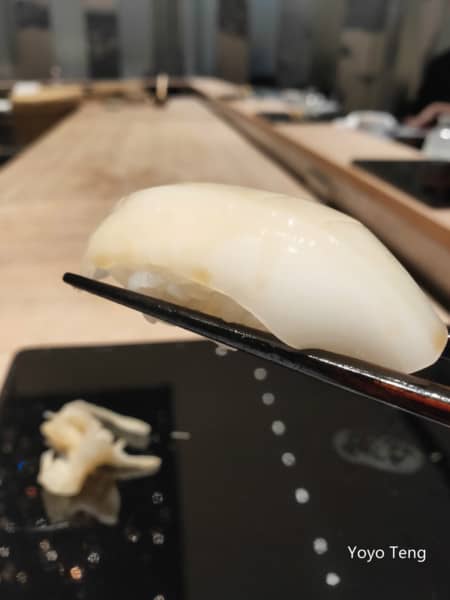
軟絲
Each type of fish has its optimal flavoring time. For example, the meat of fresh tuna needs to be firm, requiring several days of resting to allow for the proper breakdown of amino acids. It’s through the precise timing mastery of the chef that the fish achieves a melt-in-your-mouth texture.
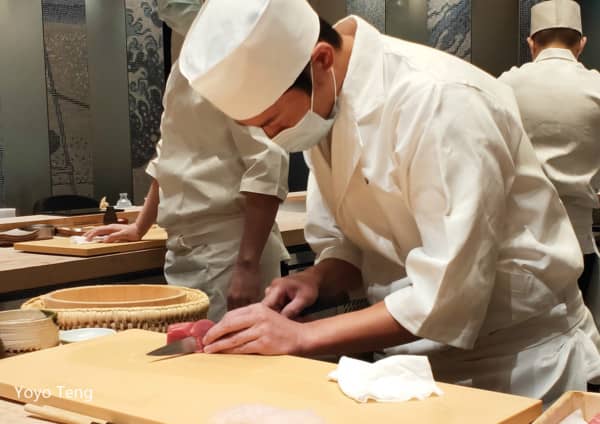
The chef specially selects top-grade tuna from Oma, Aomori. Tuna exhibits different flavors depending on the season and the cut used.
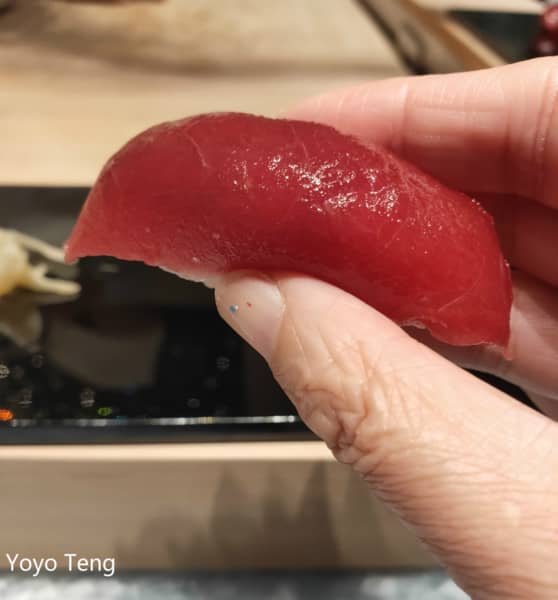
赤身
The chef selects the upper half of the tuna, which has the least fat content and comes from the part of the fish’s back that lacks fat. It has a fresh red color, low fat content, firm texture, and a chewy yet tender consistency.
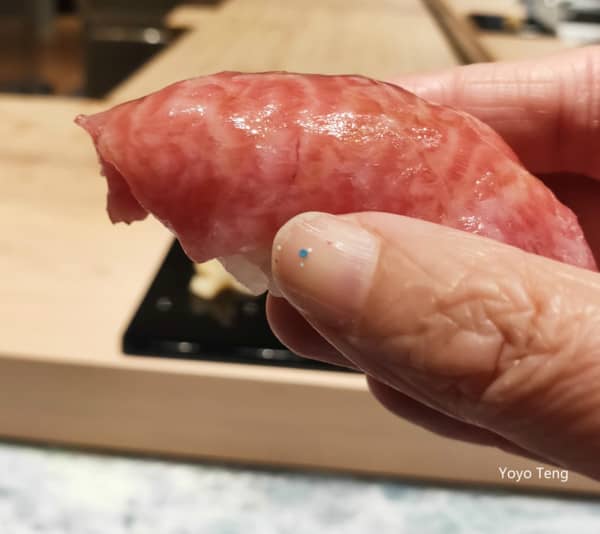
大腹
It’s the front part commonly used for sashimi. With around 90% fat content, it resembles marbled Wagyu beef, offering a rich, flavorful, and melt-in-your-mouth texture. It’s considered top-quality.
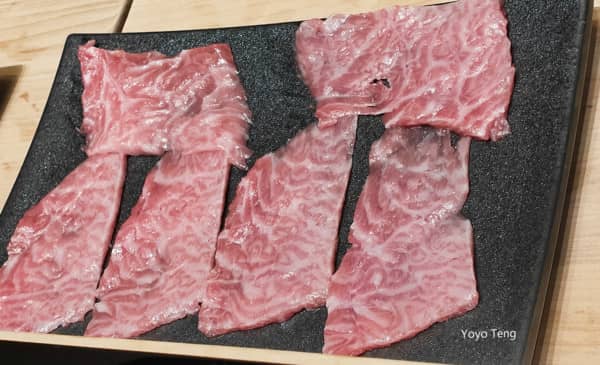
It tests the chef’s understanding and handling of each type of seafood. High-quality Japanese cuisine places great emphasis on “seasonal flavors,” meaning they select the freshest ingredients according to the changing seasons, showcasing the artistry of delicate and refined cooking.
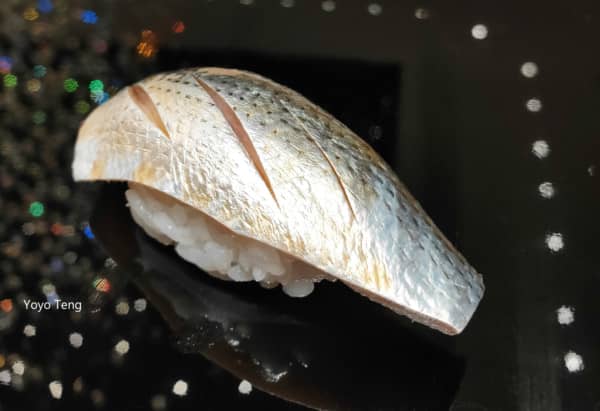
小肌
In the process of sushi making, the temperature of the sushi rice is crucial. Through precise control by the head chef and the coordination of the entire team, the temperature is maintained as close as possible to the warmth of human skin. This is essential for bringing out the best flavors of the ingredients.
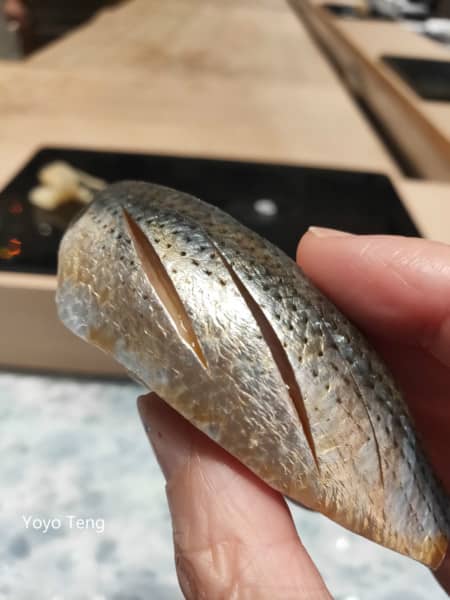
Fish like horse mackerel, known for their shiny scales, are challenging to preserve in terms of freshness. They require immediate handling to ensure you can enjoy them in their perfect state.
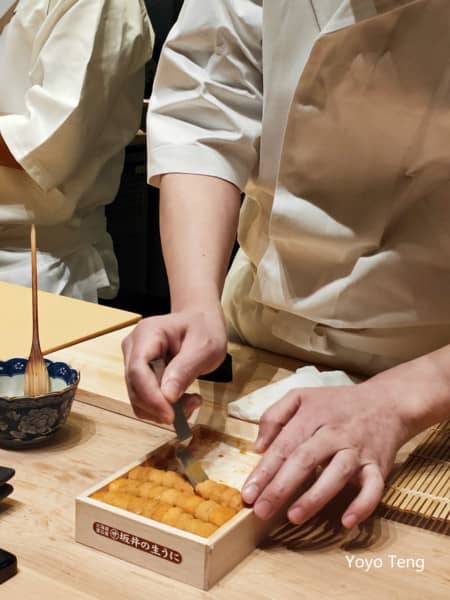
海膽
Sea urchin, found in many parts of the world, is particularly abundant in Japan, with half of the domestic sea urchin production coming from Hokkaido. This is because sea urchins enjoy eating kelp, and Hokkaido produces 95% of Japan’s kelp. So, every box of sea urchin comes from Hokkaido’s kelp beds!
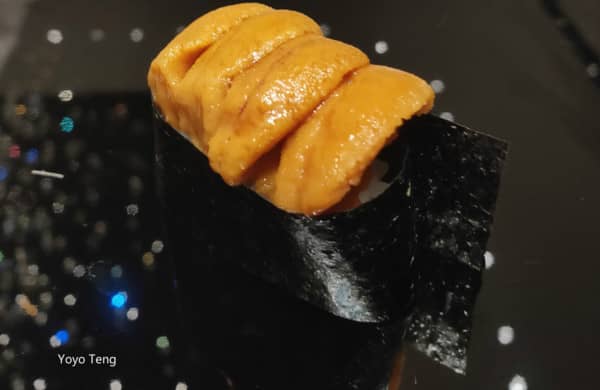
The superb quality of the dish, melting in your mouth, bursting with fresh flavors, creates a feeling of pure happiness and joy that captures your tongue.
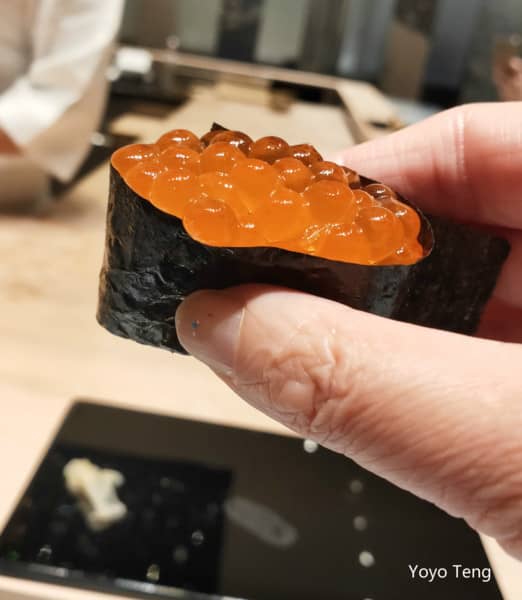
鮭魚卵
Crafting salmon roe sushi requires precision and relies on the chef’s experience. The moment you taste it, you experience the freshest, melt-in-your-mouth flavor, making it one of the most challenging dishes that truly tests the skill of a sushi chef.
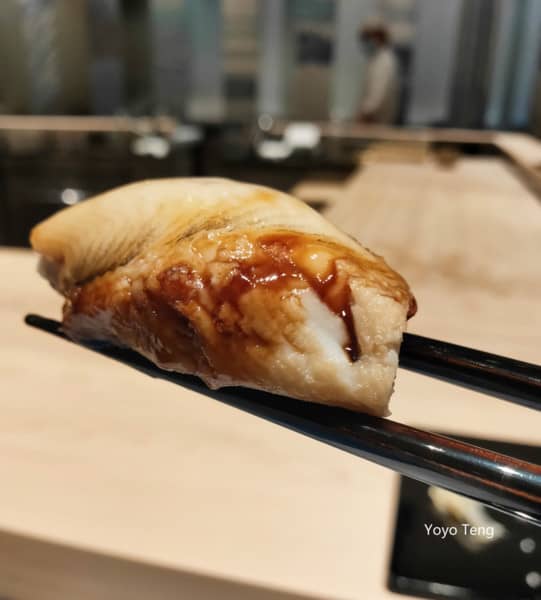
穴子
The star eel from Tsushima Island in northern Kyushu, Japan, is caught using traditional live fish trapping methods. These methods ensure the eels remain in high-quality, fresh, and alive condition without harming their bodies. By using live fish traps, smaller fish can escape naturally, helping to preserve the continuity of the fish species.
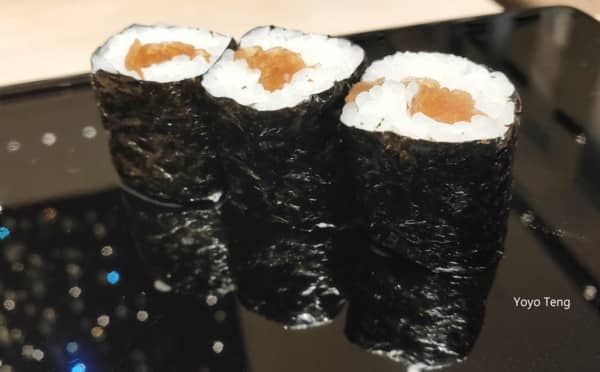
甘瓢細卷
In Japan, the dried radish has a soft and elastic texture, with less saltiness and a hint of sweetness .
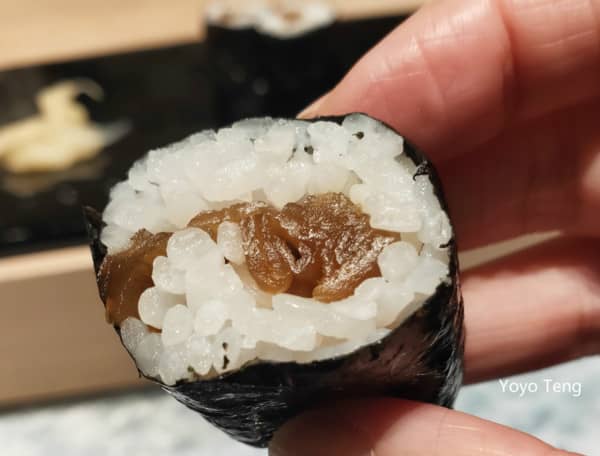
Paired with the sushi rice from Sushi Masuda Taipei, it achieves a perfect balance and fusion in the mouth, bursting with freshness, offering an unprecedented crisp flavor.
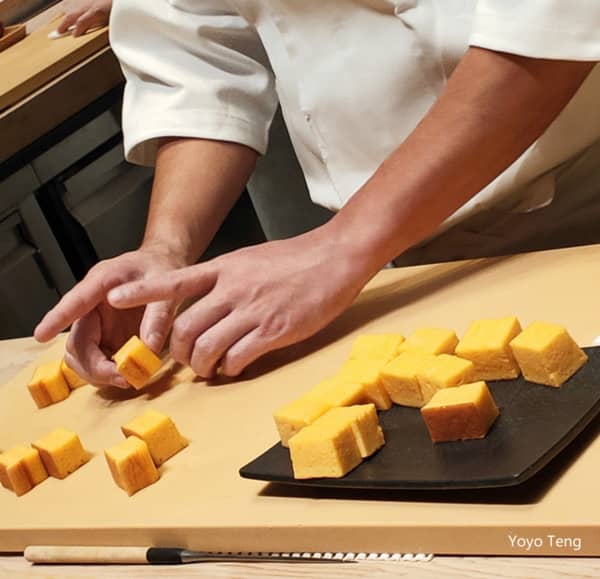
玉子燒
Chef Kosugi Hideki prepares a variety of premium seasonal ingredients for diners in the form of “Omakase,” a menu-free style of dining. The highlight of the meal is the chef’s on-the-spot preparation of tamagoyaki, which never fails to impress!

It’s a dish inherited from the sushi master Jiro Ono. It’s made by blending egg with yam paste, shrimp paste, and sugar, resulting in a moist and dense texture reminiscent of cake.
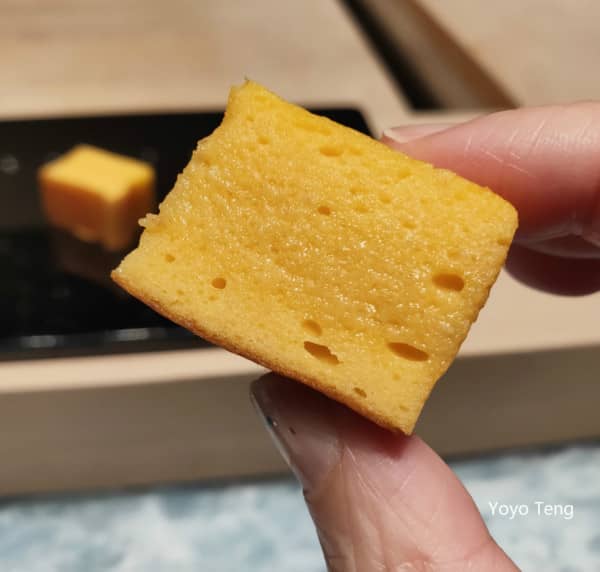
Similar to Taiwan’s traditional sponge cake, it’s moist, smooth, and dense, just like grandma used to make.
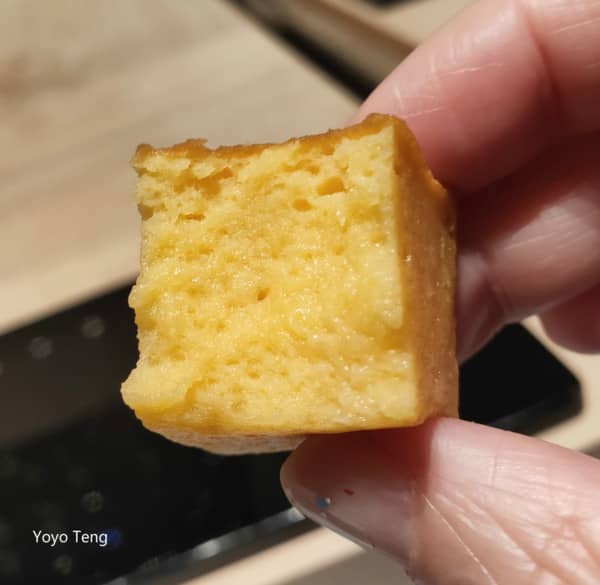
This classic Tamagoyaki is an Japanese dessert that I will never forget.
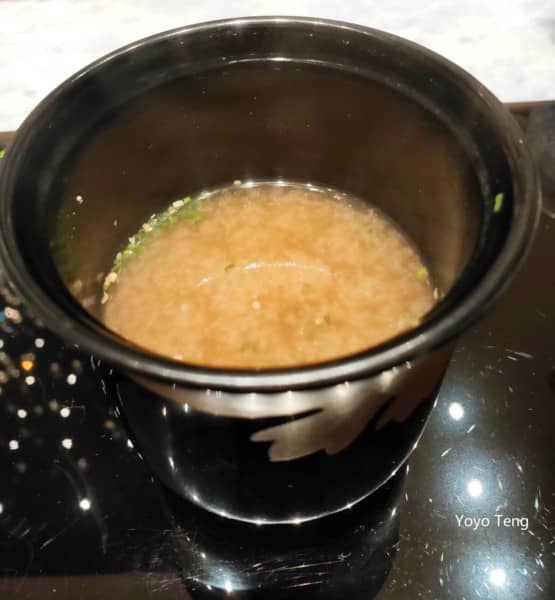
味噌汁
Made from simmering all the fish bones collected earlier and seasoned with two types of red and white miso from Saga.
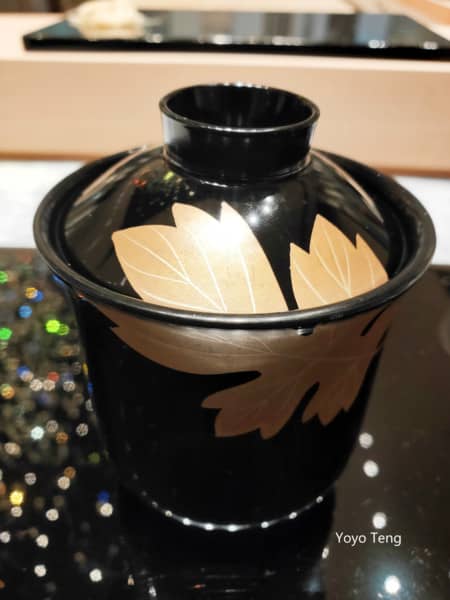
鮨增田Sushi Masuda ➡️即刻訂位
